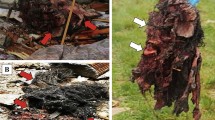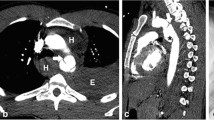Abstract
Trauma Networks are currently founded in Germany to improve patient care of severely injured persons. To assure appropriate patient treatment in a short time, the transfer of radiological image data between the connected hospitals over the internet is an important method. This paper characterizes radiological image transfer patterns in a regional trauma network and analyzes various compression options. Within the “TraumaNetwork NorthWest” in Germany, the web-based platform “MedSix” was developed. MedSix is able to transfer DICOM-data quickly and easily between connected hospitals and can be directly connected to the local PACS. Audit data of the routine system between the 01.01.2012 and the 31.12.2012 were analyzed to identify typical characteristics of radiological image exchanges. Five different compression methods were compared by a simulation. MedSix has been used by 12 hospitals. 87 % of the transfers were uploaded within 15 min. Lossless compression is able to save about 50 % bandwidth. 82 % of the transfers have a data volume of less than 200 MB. Temporary accounts for non-regular users were used regularly. Most transfers were done from small to maximum care hospitals. It is feasible to substitute physical image exchange in a trauma network with electronic exchange of radiological images between the connected hospitals. Even large datasets are transferred within an acceptable time frame. Most transfers occur from small to large hospitals. The possibility of temporary accounts seems to be a key feature for the user acceptance.









Similar content being viewed by others
Notes
Search term “data analysis dicom transfer” on pubmed.org. Executed on November 28, 2013.
References
Nijboer JMM, Wullschleger ME, Nielsen SE, McNamee AM, Lefering R, ten Duis H-J, et al. A comparison of severely injured trauma patients admitted to level 1 trauma centres in Queensland and Germany. Anz J. Surg. [Internet]. 2010 Mar;80(3):145–50. Available from: http://apps.webofknowledge.com/full_record.do?product=UA&search_mode=Refine&qid=3&SID=Y1DoEJldCNL4deke4do&page=1&doc=9
Civil I. A national trauma network: now or never for New Zealand. N. Z. Med. J. [Internet]. 2010 Jun;123(1316). Available from: http://apps.webofknowledge.com/full_record.do?product=UA&search_mode=Refine&qid=3&SID=Y1DoEJldCNL4deke4do&page=1&doc=7
Wendt KW. The trauma network in the Netherlands. Unfallchirurg [Internet]. 2008 Apr;111(4):277–9. Available from: http://apps.webofknowledge.com/full_record.do?product=UA&search_mode=Refine&qid=3&SID=Y1DoEJldCNL4deke4do&page=2&doc=20
Gabbe BJ, Biostat GD, Lecky FE, Bouamra O, Woodford M, Jenks T, et al. The effect of an organized trauma system on mortality in major trauma involving serious head injury: a comparison of the United kingdom and victoria, australia. Ann. Surg. [Internet]. 2011 Jan [cited 2011 Dec 16];253(1):138–43. Available from: http://www.ncbi.nlm.nih.gov/pubmed/21233612
Moulton SL, Haley-Andrews S, Mulligan J. Emerging technologies for pediatric and adult trauma care. Curr. Opin. Pediatr. [Internet]. 2010 Jun [cited 2011 Dec 16];22(3):332–8. Available from: http://www.ncbi.nlm.nih.gov/pubmed/20407375
Spitzer M, Verst H, Juhra C, Ueckert F. Trauma Network North-West - improving holistic care for trauma patients by means of internet and mobile technologies. Stud. Health Technol. Inform. [Internet]. 2009;150:371–5. Available from: http://www.ncbi.nlm.nih.gov/pubmed/19745335
Ruchholtz S, Kühne CA, Sturm J, Initiative Traumanetzwerk der Deutschen Gesellschaft für Unfallchirurgie. Die Umsetzung des Traumanetzwerks. Intensivmed. und Notfallmedizin [Internet]. 2007 Apr [cited 2012 Feb 28];44(3):142–8. Available from: http://www.springerlink.com/content/e871n5jp31803pt1/
Ruchholtz S, Kühne C, Siebert H, Arbeitskreis Umsetzung Weißbuch/Traumanetzwerk in der DGU, Thielemann F. “Traumanetz Baden-Württemberg” im Traumanetzwerk der Deutschen Gesellschaft für Unfallchirurgie. Unfallchirurg [Internet]. 2007 Apr;110(4):373–80. Available from: http://dx.doi.org/10.1007/s00113-007-1260-4
Juhra C, Vordemvenne T, Hartensuer R, Uckert F, Raschke MJ. Telematics in acute trauma care. Stud. Health Technol. Inform. [Internet]. 2009;143:467–71. Available from: http://www.ncbi.nlm.nih.gov/pubmed/19380978
Juhra C, Vordemvenne T, Hartensuer R, Ückert F, Weber T, Ataian M, et al. Telematic support of dispatch in trauma care [Internet]. Proceedings. 2010 [cited 2013 May 28]. Available from: http://elib.dlr.de/65616/
Neuhaus P, Storck M, Ataian M, Frett T, Weber T, Juhra C, et al. Telematische Unterstützung des Notarztes [Internet]. Tagungsband. German Medical Science GMS Publishing House, Düsseldorf; 2012 [cited 2013 May 28]. Available from: http://elib.dlr.de/81726/
Neuhaus P, Storck M, Ataian M, Frett T, Weber T, Juhra C, et al. ICT-Tools to Facilitate Physician-to-Physician Communication [Internet]. MIE2012, CD, Short Commun. 2012 [cited 2013 May 28]. Available from: http://elib.dlr.de/77987/
Michael Nerlich, Seán Patrick Stieglitz, Wolfgang Gnann. Telemedizin zur Verbesserung der Patientenversorgung in der Unfallchirurgie - Vernetzung medizinischer Versorgungseinrichtungen in Ostbayern. Trauma und Berufskrankheit [Internet]. 2000 May;2(0):S269–S274–S274. Available from: http://www.springerlink.com/content/h4av9ev5nlg2e8fn
Kämmerer, M., Mildenberger, P., Klos, G., and Schütze, B., Teleradiologie nach Röntgenverordnung - beispielhafte Anwendung der Open-Source-Software SecTelMed. Fortschr Röntgenstr 177(05):691–696, 2005.
Chakera T, Nagree Y, Song S, Jones P. Bridging the communication gap between public and private radiology services. Med. J. Aust. [Internet]. 2009 Nov [cited 2011 Oct 16];191(10):558–60. Available from: http://www.ncbi.nlm.nih.gov/pubmed/19912089
Neuhaus P, Ataian M, Juhra C, Weber T, Fritzen B, Hentsch S, et al. Data are faster than patients: Improving interhospital communication during emergency tranfers [Internet]. Proceedings. 2010 [cited 2013 May 28]. Available from: http://elib.dlr.de/65620/
Juhra C, Hermanns AK, Hartensuer R, Vordemvenne T, Ückert F, Weber T, et al. Pitfalls in image exchange in acute trauma care: lessons learned [Internet]. Abstr. B. E-Posters. 2011 [cited 2013 May 28]. Available from: http://elib.dlr.de/71135/
dcmtk project. DICOM Test Images [Internet]. Available from: http://support.dcmtk.org/wiki/dicom/images
Deutsch P. DEFLATE Compressed Data Format Specification version 1 . 3 IESG note: 1996;1–15.
Staemmler, M., Walz, M., Gmbh, L. S., and Weisser, G., Sturm J. Bundesweites Netzwerk für die Telekooperation in TraumaNetzwerken. e-Health 2012(2012):148–54, 2011.
@GIT Initiative zur Standardisierung von Telemedizin - Empfehlung für ein standardisiertes Teleradiologie Übertragungsformat. p. 1–45.
Engelmann U, Krebsforschungszentrum D, Nar NR, Röntgengesellschaft D. DIN 6868-159 : Eine Norm für die Abnahme- und Konstanzprüfung in der Teleradiologie nach Röntgenverordnung Bildgebende Verfahren und Teleradiologie. e-Health. 2010;51–4.
Henrik Frystyk Nielsen, Jim Gettys AB-S, Eric Prud’hommeaux, Håkon Wium Lie CL. Network Performance Effects of HTTP/1.1, CSS1, and PNG. 1999.
Peterson PG, Pak SK, Nguyen B, Jacobs G, Folio L. Extreme Compression for Extreme Conditions: Pilot Study to Identify Optimal Compression of CT Images Using MPEG-4 Video Compression. J. Digit. imaging Off. J. Soc. Comput. Appl. Radiol. [Internet]. 2012 Dec [cited 2012 Nov 19];25(6):764–70. Available from: http://www.ncbi.nlm.nih.gov/pubmed/22722754
Loose R, Braunschweig R, Kotter E, Mildenberger P, Simmler R, Wucherer M. [Compression of digital images in radiology - results of a consensus conference]. Rofo [Internet]. 2009 Jan [cited 2013 May 1];181(1):32–7. Available from: http://www.ncbi.nlm.nih.gov/pubmed/19115165
Kondo Y. [Medical image transfer for emergency care utilizing internet and mobile phone]. Nihon Hoshasen Gijutsu Gakkai Zasshi [Internet]. 2002 Oct [cited 2013 May 28];58(10):1393–401. Available from: http://www.ncbi.nlm.nih.gov/pubmed/12540767
Ivetic D, Dragan D. Medical image on the go! J Med Syst [Internet]. 2011 Aug [cited 2014 Sep 14];35(4):499–516. Available from: http://www.ncbi.nlm.nih.gov/pubmed/20703540
Obrul D, Liu Y, Zalik B. Progressive visualization of losslessly compressed DICOM files over the Internet. J Med Syst [Internet]. 2012 Jun [cited 2014 Sep 2];36(3):1927–33. Available from: http://www.ncbi.nlm.nih.gov/pubmed/21243409
Sturm J. [Multiple trauma and the management structure]. Zentralbl. Chir. [Internet]. 1999 Jan [cited 2013 Apr 8];124(11):1030–5. Available from: http://www.ncbi.nlm.nih.gov/pubmed/10612209
Galvagno SM, Thomas S, Stephens C, Haut ER, Hirshon JM, Floccare D, et al. Helicopter emergency medical services for adults with major trauma. Cochrane Database Syst. Rev. [Internet]. 2013 Jan;3(3):CD009228. Available from: http://www.ncbi.nlm.nih.gov/pubmed/23543573
Engelmann U, Schütze B, Schröter A, Weisser G, Walz M, Kämmerer M, et al. Teleradiologie per DICOM-E-Mail: Der empfohlene Minimalstandard der Deutschen Röntgengesellschaft. 2005. p. 102–7.
Acknowledgments
I want to thank the project partners of the Team TNNW-project, especially Maximilian Ataian (Gesakon GmbH) and Prof. Dr. Frank Ückert. Special thanks to Sandro Mesterheide for his work in the implementation and further development of MedSix and H.E.L.P. Ideas and parts of source code provided by the mdpe project, financed by the Deutsche Kinderkrebsstiftung, are greatly appreciated.
Authors’ contributions
PN captured and analyzed all data and wrote the manuscript. CJ was project leader for the TNNW-project and designed the medical concept of this study. TW contributed to the evaluation of the data. PN, MD and BB developed the data analysis concept. All authors read and approved the final manuscript.
Competing interests / funding
The Team TNNW-project has been funded by the European Union, grant no. 005-GW01-128.
The system is currently in use and operated by the authors. The authors declare that they have no other competing interests.
Author information
Authors and Affiliations
Corresponding author
Additional information
This article is part of the Topical Collection on Transactional Processing Systems
Martin Dugas, Christian Juhra, and Bernhard Breil, contributed equally to this work.
Rights and permissions
About this article
Cite this article
Neuhaus, P., Weber, T., Dugas, M. et al. Characterization of Image Transfer Patterns in a Regional Trauma Network. J Med Syst 38, 137 (2014). https://doi.org/10.1007/s10916-014-0137-7
Received:
Accepted:
Published:
DOI: https://doi.org/10.1007/s10916-014-0137-7




